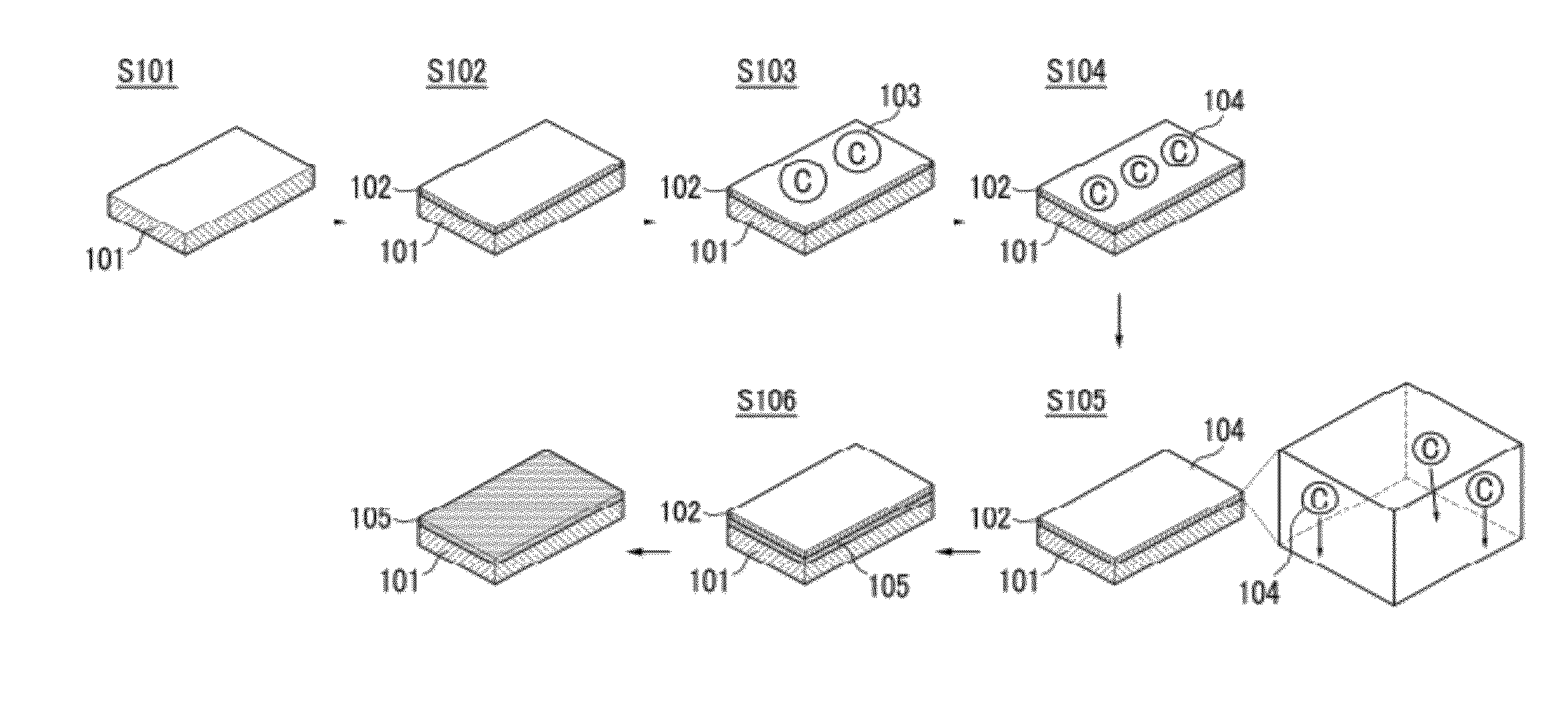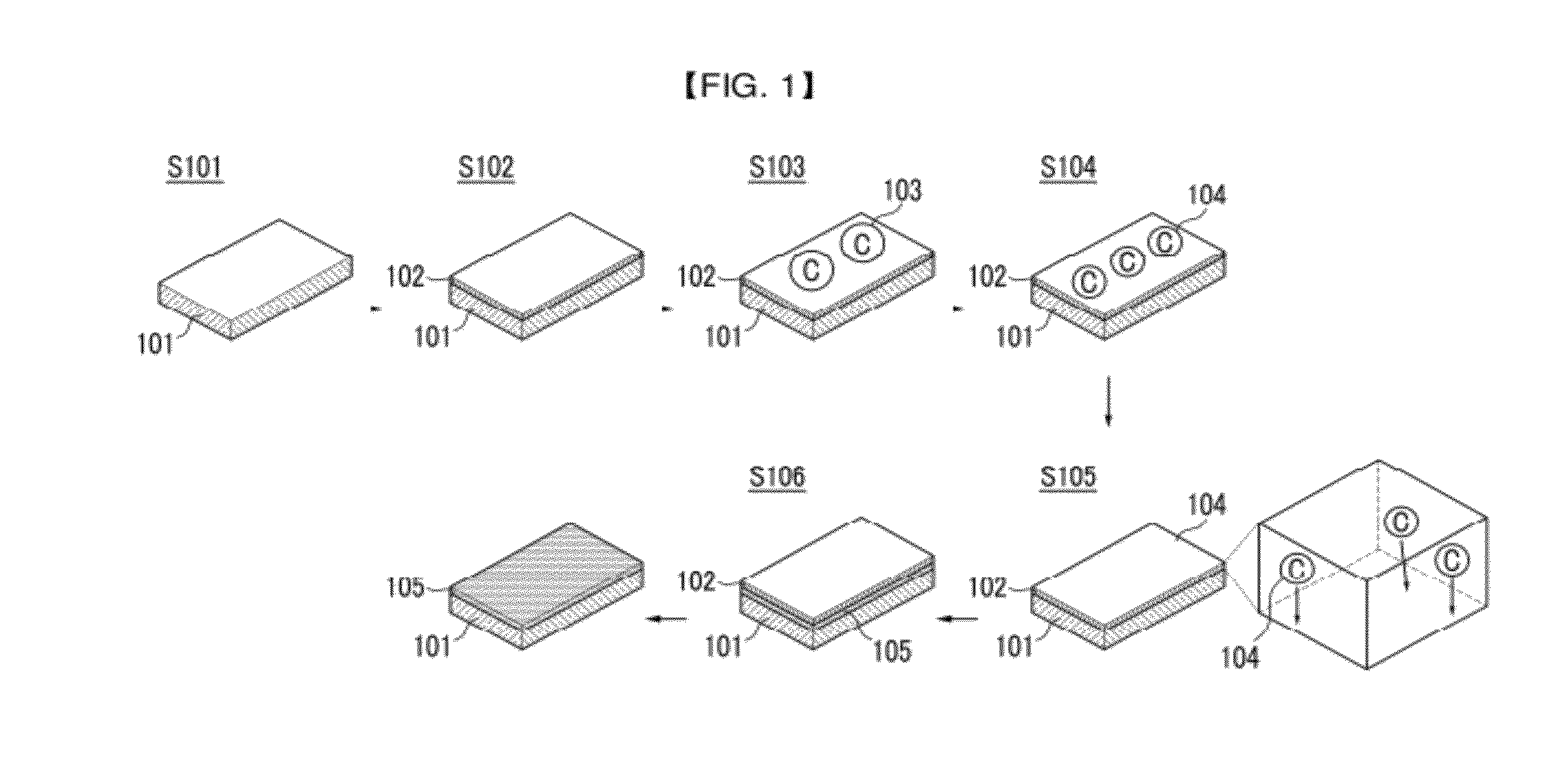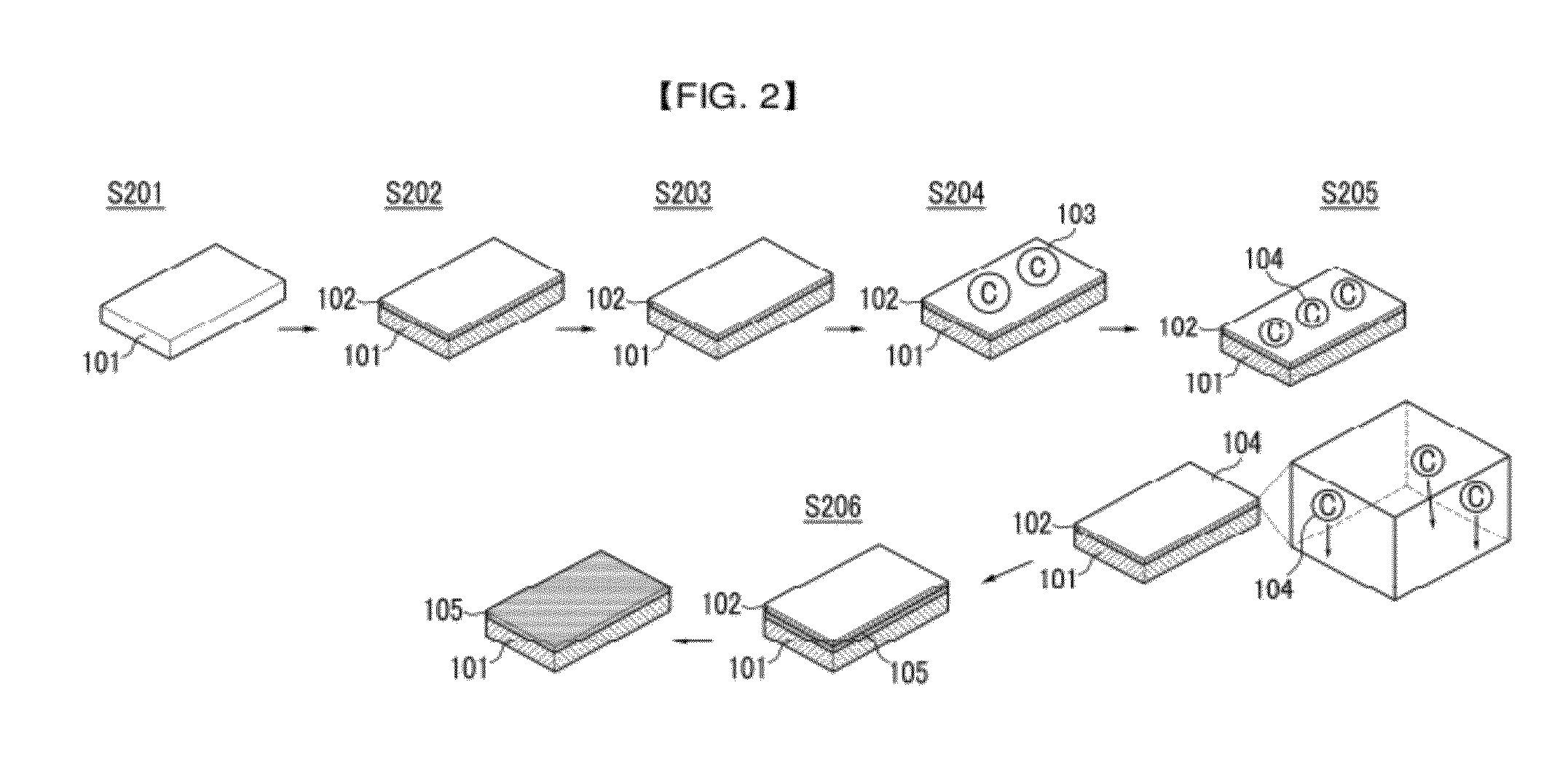Method for manufacturing graphene, transparent electrode and active layer comprising the same, and display, electronic device, optoelectronic device, battery, solar cell, and dye-sensitized solar cell including the electrode and the active layer
a transparent electrode and active layer technology, applied in the field of manufacturing graphene, can solve the problems of increasing the cost of ito, and reducing the service life of the transparent electrode using ito, etc., to achieve excellent chemical, optical and electrical characteristics, easy patterned, excellent physical and electrical characteristics
- Summary
- Abstract
- Description
- Claims
- Application Information
AI Technical Summary
Benefits of technology
Problems solved by technology
Method used
Image
Examples
example
Preparation of Graphene
Example 1
Direct Growth of Graphene on a SiO2 / Si Substrate
[0175]A liquid carbon source material according to one embodiment of the present invention was used to directly grow graphene on a SiO2 / Si substrate. The SiO2 was a 300 nm-thick layer and was deposited on a Si substrate in a conventional thermal growth method.
[0176]The surface of the SiO2 / Si substrate was cleaned. Then, a 100 nm-thick nickel thin film was deposited on the SiO2 / Si substrate using an electron beam evaporator. The SiO2 / Si substrate was maintained at 400° C. during the nickel deposition.
[0177]FIG. 3 provides a SEM image of the deposited nickel thin film.
[0178]The SEM image shows that the nickel thin film was polycrystalline. It had grains with an average size of about 100 nm.
[0179]The nickel thin film was heat-treated to improve the orientation and to increase the average grain size. The heat treatment was performed in a high-vacuum chamber. The chamber was under a hydrogen atmosphere using ...
example 2
[0186]Graphene was formed according to the same method as Example 1, except that heating temperature was 160° C. after putting a carbon source material onto a nickel thin film.
[0187]FIG. 6 provides SEM images of the graphene according to Example 2. As shown in FIG. 6, the graphene according to Example 2 had a large grain with average size ranging from several μm to tens of μm. The SEM images show clear brightness contrast depending on the thickness. The lightest image indicates a monolayer graphene C, the light image indicates a bilayer graphene B, and the darkest image indicates multi-layered graphene A.
[0188]In addition, as shown in FIG. 6, the graphene according to Example 2 was formed at a low temperature and thus had no creases due to the difference in thermal expansion coefficients between the graphene and an underlying substrate. In general, the crease might deteriorate physical properties of the graphene.
example 3
[0189]Graphene was formed according to the same method as Example 1, except that heating temperature and time were 60° C. and 10 minutes, respectively, after putting a carbon source material onto a nickel thin film.
PUM
| Property | Measurement | Unit |
|---|---|---|
| Temperature | aaaaa | aaaaa |
| Temperature | aaaaa | aaaaa |
| Temperature | aaaaa | aaaaa |
Abstract
Description
Claims
Application Information
 Login to View More
Login to View More - R&D
- Intellectual Property
- Life Sciences
- Materials
- Tech Scout
- Unparalleled Data Quality
- Higher Quality Content
- 60% Fewer Hallucinations
Browse by: Latest US Patents, China's latest patents, Technical Efficacy Thesaurus, Application Domain, Technology Topic, Popular Technical Reports.
© 2025 PatSnap. All rights reserved.Legal|Privacy policy|Modern Slavery Act Transparency Statement|Sitemap|About US| Contact US: help@patsnap.com



